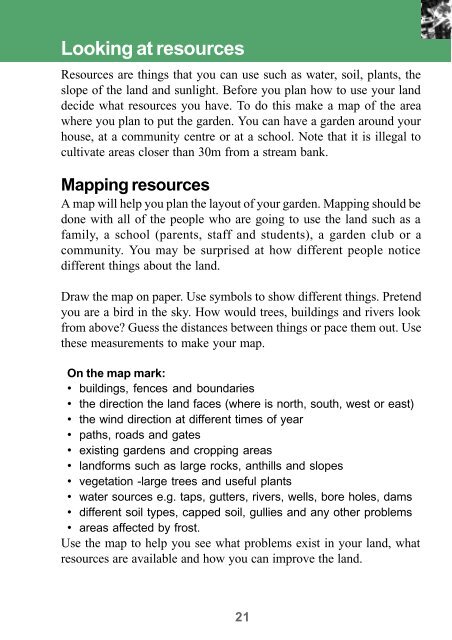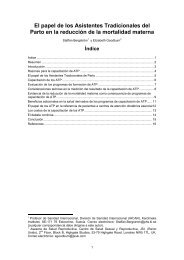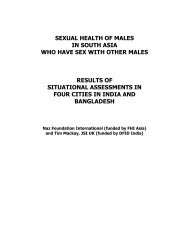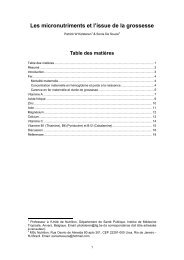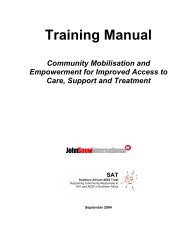book for PDF - John Snow International Europe
book for PDF - John Snow International Europe
book for PDF - John Snow International Europe
You also want an ePaper? Increase the reach of your titles
YUMPU automatically turns print PDFs into web optimized ePapers that Google loves.
Looking at resourcesResources are things that you can use such as water, soil, plants, theslope of the land and sunlight. Be<strong>for</strong>e you plan how to use your landdecide what resources you have. To do this make a map of the areawhere you plan to put the garden. You can have a garden around yourhouse, at a community centre or at a school. Note that it is illegal tocultivate areas closer than 30m from a stream bank.Mapping resourcesA map will help you plan the layout of your garden. Mapping should bedone with all of the people who are going to use the land such as afamily, a school (parents, staff and students), a garden club or acommunity. You may be surprised at how different people noticedifferent things about the land.Draw the map on paper. Use symbols to show different things. Pretendyou are a bird in the sky. How would trees, buildings and rivers lookfrom above? Guess the distances between things or pace them out. Usethese measurements to make your map.On the map mark:• buildings, fences and boundaries• the direction the land faces (where is north, south, west or east)• the wind direction at different times of year• paths, roads and gates• existing gardens and cropping areas• land<strong>for</strong>ms such as large rocks, anthills and slopes• vegetation -large trees and useful plants• water sources e.g. taps, gutters, rivers, wells, bore holes, dams• different soil types, capped soil, gullies and any other problems• areas affected by frost.Use the map to help you see what problems exist in your land, whatresources are available and how you can improve the land.21


